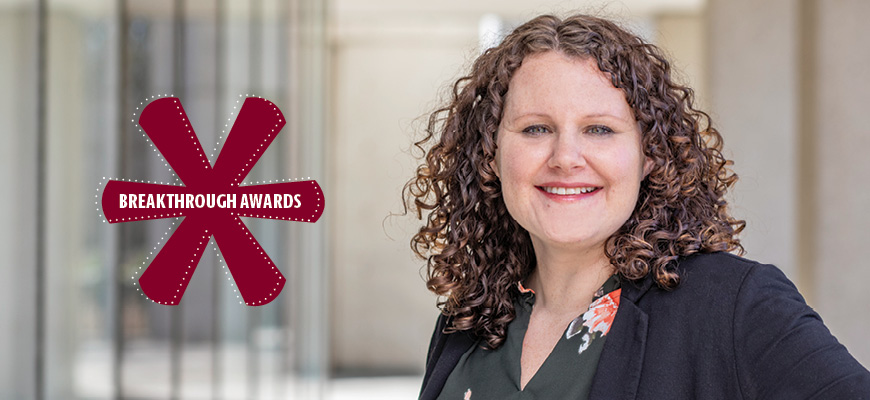
Breakthrough Star: Krystal Werfel
Public health researcher connects the dots between hearing impairment, language development
Posted on: June 29, 2020; Updated on: June 29, 2020
By Craig Brandhorst, craigb1@mailbox.sc.edu, 803-777-3681
If a child has hearing loss, they’ll have a harder time learning to read. And write and spell and so on.
The reason is simple. Children learn to speak by listening to speech, and they learn to read by associating written letters and words with that internal language. The child with hearing loss is at an obvious disadvantage.
But Krystal Werfel wants to help. An associate professor in the Department of Communication Sciences and Disorders, Werfel is conducting a major research project to identify the predictors for reading difficulty among preschoolers with hearing impairment. The end goal is to develop interventions for teaching those children to read sooner and more effectively.
“I want to know if there is something in preschool that can tell us if you will be a student who goes on to be a good reader in elementary school or if you’re going to need a lot of help,” she says. “We’re interested in how early language can affect your literacy throughout your school years.”
Children with hearing loss, as a group, have a fourth-grade reading level when they graduate or leave high school. That’s the median. And that hasn’t changed since the 1970s.
Krystal Werfel, public health professor and researcher
As part of a major research project, Werfel’s team enrolled a group of four-year-olds with hearing loss and assessed their abilities. They are now tracking the children’s reading progress on an annual basis.
And the work is critical, according to Werfel, for if a child isn’t diagnosed with hearing loss early, or is late receiving cochlear implants, they miss a critical period of language development and will lag behind their peers.
“From kindergarten to third grade, we often need these kids to make two years of progress every year to catch up,” Werfel says. But that doesn’t typically happen, setting a trajectory that affects a child’s education throughout their schooling.
“Children with hearing loss, as a group, have a fourth-grade reading level when they graduate or leave high school. That’s the median,” says Werfel. “And that hasn’t changed since the 1970s. So clearly our approaches now are not working. We’re not making any more progress than we were making 40 years ago.”
One problem, she says, it that educators tend to use the same methods when teaching reading to children with hearing loss that they use when teaching children with typical hearing. And cochlear implants, while certainly beneficial, don’t level the educational playing field for children learning to read.
“There’s so much better access to sound than we had in the past, but it is still not the same way that the rest of us hear,” she says. “The technology compresses frequencies. The sound quality isn’t the same. That makes the task of reading, or learning to read, particularly difficult.”
But learning more about how children with hearing loss process language, and then targeting those skills (which seem to be different than the skills of children with typical hearing) may yield new, more effective education strategies.
“We’re really good at teaching children how to read when they don’t have hearing loss. We know a lot about how that process works,” says Werfel. “Figuring out how to adapt our approaches so that they work for children with hearing loss — once we understand more about what their language looks like — offers a lot of potential for growth, especially combined with the new technologies.”
Share this Story! Let friends in your social network know what you are reading about